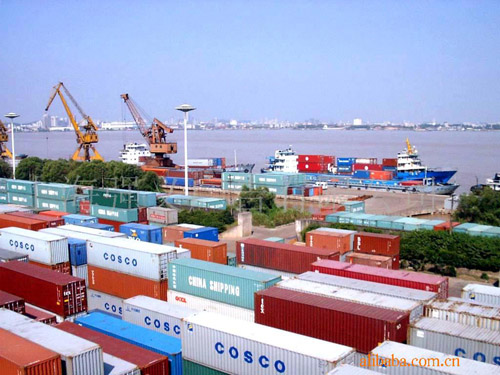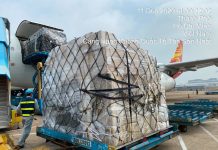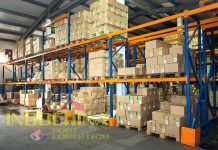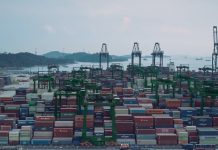THE STRATEGY FOR CUSTOMS DEVELOPMENT UPTO 2020
Viewpoints:
The Strategy for development of Vietnamese Customs upto 2020 (below referred to as the Strategy) thoroughly grasps the following viewpoints:
1.Assuring the Party leadership and the state management; observing law and complying with the national socio-economic development orientations and the public administration reform program; and realizing international commitments to which Vietnam is a contracting party;
2.Facilitating trade while enhancing state administration of customs under law;
3.Taking reform and modernization as the foundation, concentrating investment on customs modernization in key regions and areas, while taking into account balanced and harmonious development between regions and areas lo ensure overall development and modernization of Vietnamese Customs. Promoting internal strengths as a major solution in combination with making use of external assistance for fast and sustainable development;
4. Promoting the aggregate strength of the entire political system, ministries, sectors and localities, with the customs sector as the core, and based on the supervision and implementation by the business community and people.
Overall objectives:
To build a modern Vietnamese Customs with sufficient and transparent mechanisms and policies, simple and harmonious customs procedures reaching international standards, based on the application of information technology, centralized data processing and wide application of risk management methods, reaching a level equivalent to those applied in advanced Southeast Asian countries. To build a professional and specialized customs force with modern equipment and techniques and effective and efficient operations, contributing to facilitating lawful trade, developing tourism, attracting foreign investment, assuring national security and social safety, protecting the interests of the State and the rights and legitimate interests of organizations and individuals.
Major objectives:
1. Institutions: To build and perfect the customs legal system toward modernization, consistency, compliance with the guidelines on administrative reform procedures and international standards and commitments; to build a modern legal system on customs consisting of sufficient regulations on customs procedures, customs administration regime and mechanisms to facilitate trade, regulations on tax administration, border control, sanctions against and handling of violations and settlement of complaints, regulations on powers of customs offices corresponding to their duty to enforce customs, tax and other relevant laws;
2. Professional customs work: To strive for the target that by 2020, customs procedures and customs administration regimes will be basically simple, effective, harmonious and compliant with international standards and practices; customs procedures in key regions will be mainly carried out electronically; information will be exchanged prior to arrival of goods, payment and license administration will be conducted electronically; the mechanism for enterprises to enjoy special priority in customs procedures and security according to World Customs Organization (WCO) standards will be introduced; and the risk management method will be applied systematically in all customs steps. From 2012, to incrementally conduct centralized processing of customs clearance data at provincial-level Customs Departments; to implement the national customs single-window mechanism and participate in the ASEAN single-window mechanism.
To raise the tax administration level and capacity on par with the level in regional countries. To ensure fair, transparent, feasible and effective tax administration up to international standards. To raise taxpayers’ sense of law observance, secure the national interests, and restrict challenges and disadvantages emerging in the process of integration. To ensure state budget revenues.
To organize and improve basic professional work and prevent and combat with focuses and effectiveness cross-border smuggling and transportation of banned goods. To implement international commitments on antiterrorism and anti-money laundering activities, protect intellectual property rights and enter into customs cooperation on joint control. To apply technical barriers in accordance with law and international practices.
By 2020, post-customs clearance inspection activities will be professional, specialized and effective using the risk management method and standardized professional processes based on information technology application combined with strict sanctions and handling measures.
3.Apparatus organization and human resources: To build a modern customs organizational apparatus on the principle of centralization and consistency to meet socioeconomic development requirements and tasks and enhance state administration, contributing to preserving national security and safety. To build a professional customs force with transparent, uncorrupted and effective operations quickly responding to changes in environment and technology and requirements of the international integration process;
4.Application of information technology: To build a modem customs information technology system on the basis of centralized data processing and integration of all functions, processing of e-customs dossiers, emanifests, e-payment and e-licenses; to build regional data processing centers of level 2+ or higher, and sectoral data processing centers of level 3+ or higher, ensure that the information technology.
System will reach high security and safety standards (24/24 and 24/7) and be managed in the same way like service providers; to build a portal that can be connected to and exchange information with related agencies, and implements the national and ASEAN customs single-window mechanisms. To ensure complete, accurate and timely state statistics on customs as the basis for monitoring, analyzing, evaluating and forecasting import and export and other activities to serve in time state agencies in the making, direction and administration of economic, trade and tax policies.
5. Specific targets and implementation roadmap:
– Implementation of e-customs procedures: By 2015,100% of provincialand district-level Customs Departments in key areas (international seaports, airports and road border gates and key economic regions), 60% of basic customs operations, 70% of import and export value, and 60% of enterprises will apply e-customs procedures.
– To centralize the processing of electronic data of the customs clearance system by 2015.









